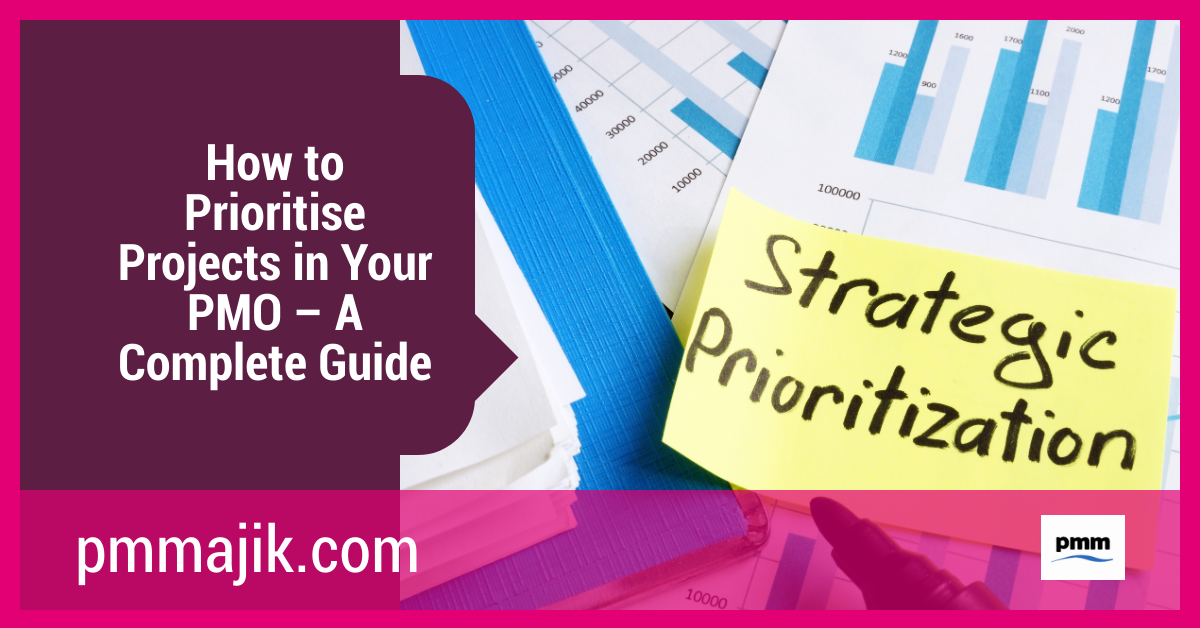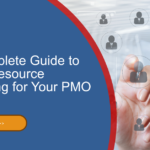The resources you have in your project management office (PMO) aren’t infinite, as much as we’d all like them to be. How to prioritise tasks in your PMO is essential to ensure that time, money, and people can be allocated efficiently.
Project prioritisation requires ongoing work – not just a meeting once a year. There’s a lot of work that goes into it so we’re going to dedicate the coming weeks to exploring how a PMO should go about prioritising projects.
To begin with an overview, we’re going to look at:
- The benefits of having a good project prioritisation process in your PMO
- What good project prioritisation looks like
- Things you need to consider when designing your project prioritisation process
- Different methods of project prioritisation
And we’ll be expanding on each of these topics in future blogs.
What are the benefits of project prioritisation for my PMO?
It’s important to know where you need to focus the time and resources at your disposal as a PMO. Particularly if your office doesn’t have the final say in projects being added to your pipeline, you need to be able to assess a project for its relevance to the business.
Prioritisation will ensure the change you’re working to affect in the business runs smoothly and delivers value. It helps you choose projects that deliver value as well as define exactly what the definition of value is.
What’s important when designing a project prioritisation process?
You may be in a new PMO that doesn’t have any prioritisation process, taking over at an established PMO that needs a prioritisation revamp, or working to improve a process in your current PMO. Whichever your situation, you need to get prioritisation right.
The process you come up with needs to be persisted with – not too cumbersome it falls by the wayside. The process needs to be:
- Consistent
- Adaptable
- Accessible
- Realistic
To ensure that everyone engages in it.
Your project prioritisation also needs to be able to monitor progress. It should be an ongoing part of your PMO activity rather than tacked on after other tasks.
It also needs to facilitate better decision-making. Prioritisation should be data-backed and provide clear answers to your PMO team who are allocating resources across projects under your management.
What’s the process when changing a project prioritisation framework?
You need to work through a range of considerations when coming up with a fresh prioritisation framework to make sure it will work in your particular PMO.
Here are the questions you need to be asking yourself.
Who do you need?
When assigning priority to projects, you will need expert opinions on elements like financial analysis and making a risk assessment. Project stakeholders, business leaders, and subject matter experts from across the business will need to be involved.
What are your drivers?
What is important to your business and PMO when delivering projects? Some PMOs are looking for a return on investment, others are looking at customer satisfaction, whilst other PMOs will be screening for projects that will deliver a reduced risk for the business.
When will you prioritise?
Establish a schedule that will work for your stakeholders and match up with the other work your PMO needs to do. Indeed, you’ll need to prioritise your prioritisation in your schedule.
How will you conduct prioritisation?
Is an annual meeting really enough? How often through the year and during a project will you check the prioritisation assessment? You may task an analyst with some basic score checking each month, but when will you bring your C-suite sponsor in for a meeting?
What methods can I use to prioritise my PMO’s projects?
There are a few different ways that you can score a project that will help you prioritise all the projects your office is managing.
Each one has its pros and cons, which we’ll explore more thoroughly in future posts:
- Rank order is a simple model, useful in small PMOs
- Weighted scoring is more detailed and still relatively easy to handle
- Analytical hierarchy process is data-driven and most suited to mature PMOs
The take-home
There is great value in assigning the proper priority to your projects. Learning or refreshing how to prioritise projects in your PMO will ensure that the work your office completes fully aligns with business goals.
Asking the right questions about your needs before choosing a scoring model for your prioritisation will mean your new process will be agile and fit for purpose.






